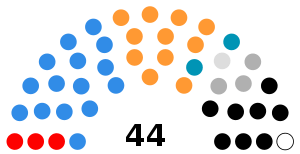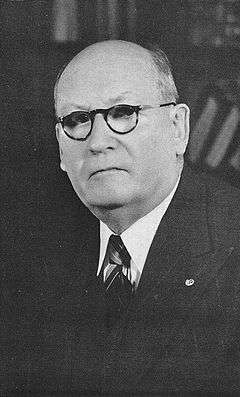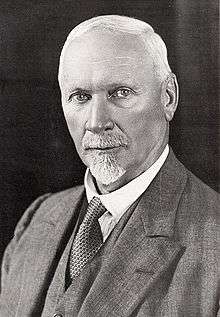1948 South African Senate election
For the fifth Senate of South Africa, the eight nominated Senators were appointed on July 28, 1948 and the Electoral Colleges met in the provincial capitals the following day. At the end of this process the government had 22 supporters (Reunited National Party 11, Afrikaner Party 2, Independent 1 and the 8 nominated Senators) and the opposition 21 (United Party 15, Labour Party 3, and Native Representatives 3). The fourth Native Representative seat was vacant.[1]
| ||||||||||||||||||||||
36 of 44 seats in the Senate 23 seats needed for a majority | ||||||||||||||||||||||
|---|---|---|---|---|---|---|---|---|---|---|---|---|---|---|---|---|---|---|---|---|---|---|
| ||||||||||||||||||||||
 Seat distribution in the Senate after the election | ||||||||||||||||||||||
The South West Africa Affairs Amendment Act 1949 added four additional members to the Senate, of whom two were to be elected, and two nominated by the Governor-General.[2]The elected Senators were chosen by an Electoral College, composed of the members of South-West Africa's Legislative Assembly and the six members of the House of Assembly representing the territory.[3]
Of the nominated Senators, one was to be selected mainly on the ground of his "thorough acquaintance, by reason of his official experience or otherwise, with the reasonable wants and wishes or the coloured races of the territory".[4]All four Senators chosen on 29 September 1950 were National Party supporters.[5]
Bibliography
- Keesing's Contemporary Archives 1948–1950, page 9440.
- Official Documents of the 4th Session of the United Nations General Assembly, United Nations, 1949, page 11
- The South West Africa/Namibia Dispute: Documents and Scholarly Writings on the Controversy Between South Africa and the United Nations, John Dugard, University of California Press, 1973, page 122
- Argument and Change in World Politics: Ethics, Decolonization, and Humanitarian Intervention, Neta Crawford Cambridge University Press, 2002, page 334
- Keesing's Contemporary Archives 1950–1952, page 11076

